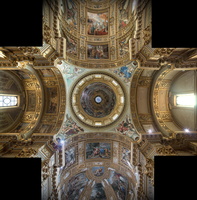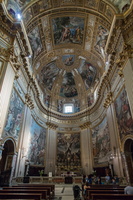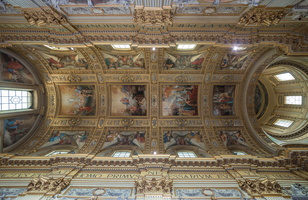The fresco decoration of Sant'Andrea's dome was one of the largest commissions of its day. The work was disputed by two Carracci pupils, Giovanni Lanfranco and Domenichino. In 1608, Lanfranco had been chosen by Cardinal Alessandro, but the Ludovisi papacy of Pope Gregory XV favored the Bolognese Domenichino. In the end, both artists were employed, and Lanfranco's lavish dome decoration (completed 1627) set the model for such decorations for the following decades. This dome was for a long time the third largest dome in Rome, after the Basilica of St Peter and the Pantheon
 https://en.wikipedia.org/wiki/Sant%27Andrea_della_Valle
https://en.wikipedia.org/wiki/Sant%27Andrea_della_Valle
 https://fr.wikipedia.org/wiki/Église_Sant%27Andrea_della_Valle
https://fr.wikipedia.org/wiki/Église_Sant%27Andrea_della_Valle
 https://en.wikipedia.org/wiki/Sant%27Andrea_della_Valle
https://en.wikipedia.org/wiki/Sant%27Andrea_della_Valle https://fr.wikipedia.org/wiki/Église_Sant%27Andrea_della_Valle
https://fr.wikipedia.org/wiki/Église_Sant%27Andrea_della_Valle














































0 comments
Add a comment